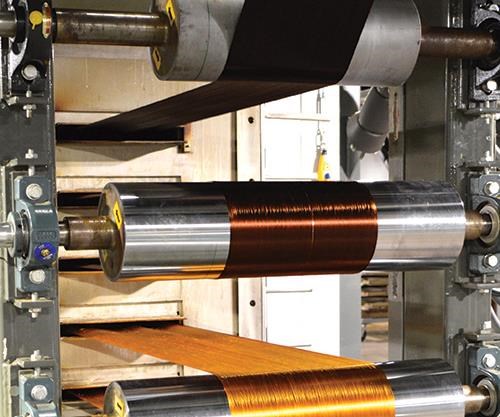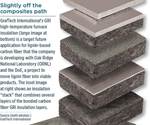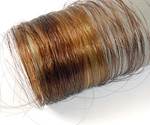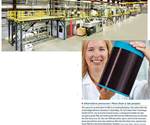Alternative precursor R&D: Oak Ridge National Laboratory
Oak Ridge National Laboratory (ORNL, Oak Ridge, TN, US) has been at the forefront of North American research into alternatives to the polyacrylonitrile (PAN) precursor used to make aerospace-grade carbon fiber.
In North America, Oak Ridge National Laboratory (ORNL, Oak Ridge, TN, US) has been at the forefront of research into alternatives to the polyacrylonitrile (PAN) precursor used to make aerospace-grade carbon fiber. For more than 15 years, the group has investigated low-cost carbon fiber production using alternatives that have included textile-grade PAN, polyolefin and lignin. Following years of bench- and laboratory-scale projects, ORNL is now home to the US Department of Energy’s (DoE) Carbon Fiber Technology Facility (CFTF), where, in 2013, a flexible and fully instrumented carbon fiber production line manufactured by Harper International (Lancaster, NY, US) was installed. The new fiber line, with low- and high-temperature slot furnaces, is flexible enough to handle non-PAN-derived fibers at a semi-production scale, says ORNL’s Connie Jackson, who manages fiber production. The line could accommodate, as part of future studies, nontraditional processing technologies, such as plasma- and microwave-based heat treatment and stabilization, which, so far, has occurred at a smaller scale.
The group’s current work involves carbonization of the lowest-cost PAN available, normally used for apparel, acquired from multiple suppliers. Fibers are carbonized in ultra-large-tow format (up to 610K). Jackson says that produced tows have been shown to have a “modest” tensile strength of about 500 ksi. Part of the CFTF’s activities involve developing ways to treat the fibers, including plasma treatment, sizings for compatibility with thermoplastics and tow splitting for more manageable fiber products.
In 2011, ORNL established the Oak Ridge Carbon Fiber Composites Consortium to accelerate the development and deployment of new, lower cost carbon fiber composite materials for lightweighting, to enhance the economic competitiveness of US-based manufacturers. So far, more than 50 consortium members are participating in projects and technology transfer initiatives. The consortium is currently merging with the Institute for Advanced Composites Manufacturing Innovation (IACMI, Knoxville, TN, US).
Cliff Eberle, the technology development manager for carbon and composites at ORNL and now IACMI’s director of materials and processing technology, says, “Our thesis is driven by trying to achieve energy security for US taxpayers and lower energy costs. In the US alone, we use 19 million barrels of oil per day, and about 70% of that is for transportation. If we can reduce that energy usage with lighter weight vehicles made with low-cost carbon fiber, it will make a huge difference to our country, and take us closer to energy independence.”
This short article is a Side Story that accompanied CW's Feburary 2016 feature article titled, "Alternative precursor R&D: Lignin in the lightweighting limelight." To read the main article, click on its title under "Editor's Picks," at top right.
Related Content
-
Materials & Processes: Composites fibers and resins
Compared to legacy materials like steel, aluminum, iron and titanium, composites are still coming of age, and only just now are being better understood by design and manufacturing engineers. However, composites’ physical properties — combined with unbeatable light weight — make them undeniably attractive.
-
Cryo-compressed hydrogen, the best solution for storage and refueling stations?
Cryomotive’s CRYOGAS solution claims the highest storage density, lowest refueling cost and widest operating range without H2 losses while using one-fifth the carbon fiber required in compressed gas tanks.
-
Plant tour: Joby Aviation, Marina, Calif., U.S.
As the advanced air mobility market begins to take shape, market leader Joby Aviation works to industrialize composites manufacturing for its first-generation, composites-intensive, all-electric air taxi.
















.jpg;maxWidth=300;quality=90)

